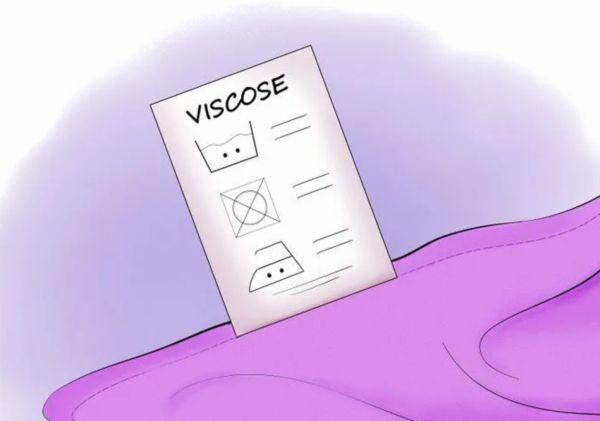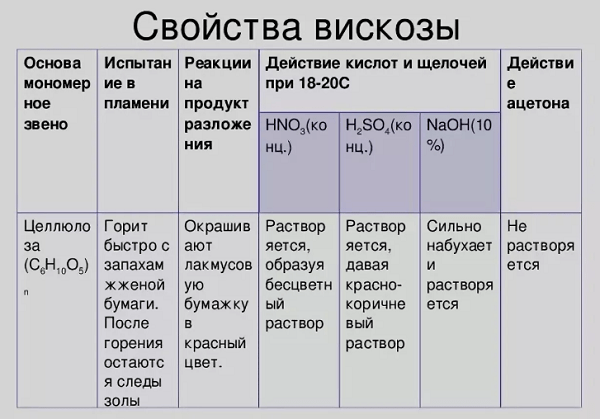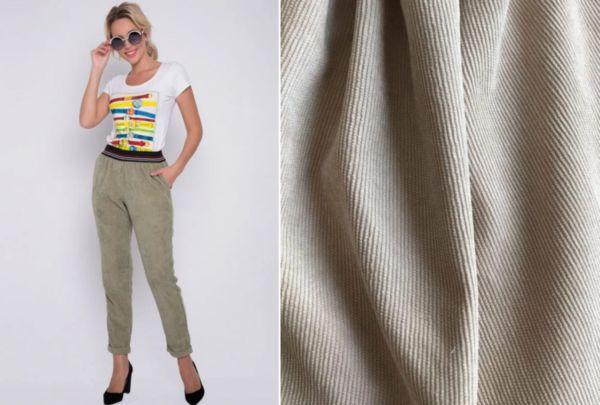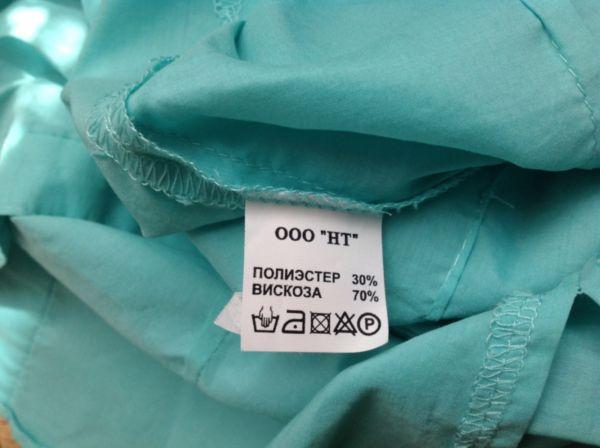Does viscose shrink after washing - 4 reasons why viscose shrinks
Content:
A common question regarding viscose is whether it shrinks when washed or not? The fabric itself is prone to shrinkage. Knowing this feature, manufacturers carry out anti-shrink treatment and indicate on the label at what temperature to wash and iron the product to avoid deformation. If these conditions are met, viscose does not shrink after washing and retains its original appearance and shape well.

Does viscose shrink?
Viscose is a controversial fabric. The controversy concerns not only the tendency to shrink, but also the origin of the fabric. Some classify it as artificial fabric, while others classify it as natural.
In fact, viscose is an artificial fabric obtained from the natural raw material cellulose. Recall that cellulose is also used to make paper. To make fabric from it, a solution is obtained by xanthogenation, which is passed through a spinneret plate into an acid bath. The resulting viscose threads are dyed, dried and sent to textile production.Various types of fabrics are made from viscose fiber - oil, staple, lining and others.
If we talk about 100% viscose in rolls, then without special treatment it shrinks on the order of 3-4%. When mixed with wool, shrinkage can reach 6-7%.
After treatment, the fabric becomes quite resistant to deformation. Clothes and bedding made of viscose, as it should be, do not shrink after washing.
What is anti-shrink treatment?
They try to prevent deformation of fabrics at the stage before sewing the product.
The essence of anti-shrink treatment comes down to artificial shrinkage of viscose fabric.
Different methods are used:
- Mechanical. The fabric is pulled through hot rollers with an elastic band pressed tightly.
- Chemical. It involves impregnating the fibers with a solution of formaldehyde, which reduces sensitivity to moisture.
- Tracking. Mainly used for knitwear. Viscose knitwear is left for a long time in a room with a given humidity. As a result, it shrinks significantly and subsequently retains its shape better.
Reasons for product shrinkage
The amount of shrinkage of textile products depends on several factors:
- fabric structure;
- yarn thickness, weave and fabric structure;
- quality of tailoring, style;
- compliance with product care recommendations.
Viscose has the ability to absorb moisture. When wet, it changes its size. The more the fibers are twisted, the more they swell. In this case, not only the diameter of the thread changes, but also the structure of the fabric itself.
Product composition and viscose content
Viscose is often combined with other fibers to improve the properties of clothing or bedding. Different additives make their own adjustments.
When included in synthetics, viscose products will shrink less, and when natural fibers are added, they will shrink more.
In particular, the cause of viscose shrinkage may be a high content of:
- wool;
- flax;
- cotton
Type of weaving and type of fabric
Viscose is used to make a wide variety of fabrics. The type of weave has a significant impact on the tendency of the fabric to shrink.
After washing they usually shrink:
- knitwear;
- velveteen;
- viscose twill;
- crepe with a high synthetic content;
- staple.
Low-grade fabric and poor quality tailoring
Cheap viscose and products made from it can shrink, pill, and stretch. To avoid problems, you need to choose quality material.
Before viscose threads become a piece of fabric, a tremendous amount of work is done. The fibers are processed, bent and stretched many times. This is done so that they remain in “tension”.
When fabric gets wet, the threads relax and the garment can become distorted. To prevent this from happening, manufacturers and tailors who value a good reputation always carry out anti-shrink treatment. But there are also those who do not strive to release a quality product.
Incorrect washing mode and temperature
The most common reason that viscose shrinks after washing is the wrong choice of washing mode and non-compliance with the temperature regime.
Viscose is considered a capricious fabric. When wet, it becomes especially tender and fragile. A rotating drum, washing at high temperatures and strong wringing can lead to significant deformation of the product. Viscose can also shrink when hand washed in hot water. The shrinkage will be even more pronounced if you then rinse the item in cold water.
How to wash viscose correctly
Before washing a viscose product, you need to study the label. It is usually sewn inside out on the left side.
Labels should never be thrown away. They are cut off only if they create discomfort when worn. The label is signed and stored so that you can see at any time how to care for the product.
Viscose fabrics may have different care instructions. As a standard, the correct way to wash items is as follows:
- The water temperature is not higher than 35 degrees.
- Hand wash or delicate cycle in washing machine.
- Spin disabled.
Wet viscose should not be twisted. You can carefully fold the fabric and wring it out or blot it with a terry towel.
How to dry and iron without harm
As well as washing, drying and ironing viscose is carried out according to the manufacturer's instructions on the label. This is the only way to ensure that deformation of the product is avoided.
If the label is lost, follow the general rules for caring for viscose:
- Items should be dried in a horizontal position to prevent the fabric from stretching. Horizontal drying can be used for small and light items. Soft hangers should be used. The rope and clothespins will leave creases in the fabric.
- Iron the fabric correctly from the inside out so that the iron does not leave shiny marks. For ironing on the front side, use special paper or dry cotton cloth.
- Iron mode – “synthetic” or “silk”.
- Recommended ironing temperature is up to 130 degrees.
- Viscose should not be steamed or ironed while wet, otherwise it may stretch out.
The main disadvantage of viscose is that it wrinkles a lot. You have to iron it for a long time and carefully, since you cannot increase the ironing temperature and moisten the fabric.Therefore, they try to buy viscose fabrics not in pure form, but in a mixture with artificial fibers, which reduce the tendency to wrinkle. This fabric does not need to be ironed if it is stored flat.
What to do when shrinking viscose
Often, the rules for caring for any fabric begin to be studied after the item has deteriorated. Fortunately, shrinkage is not the worst thing that can happen to viscose. In most cases, the situation is fixable.
3 ways to return a shrunken product to its original shape:
- Steam. When processed with hot steam, the fibers are pulled out and the viscose is stretched. The main thing is not to overdo it with steaming. You should steam the entire perimeter of the product, act quickly, and do not pull the fabric with your hands in different directions.
- Put on a damp item. Wet viscose is quite pliable and easily stretches on a warm body. The downside is that she can stretch out on her elbows and knees.
- Using a hairdryer. The wet product is placed horizontally, stretched well and evenly, and then dried with a hot stream of air.
The listed methods cannot be called ideal. If the viscose not only shrinks, but is also noticeably deformed, it will no longer be possible to return it to its original appearance.
Questions and answers
How to treat viscose so that it does not shrink when washed?
Typically, fabric that is planned to be used for sewing bed linen or clothing is subjected to anti-shrink treatment. All fabrics consisting of 50% viscose or more are processed. The material is wrapped in a damp sheet. After 3 hours, iron from the wrong side. Then be sure to cut off a few centimeters around the edges. The edges are less susceptible to shrinkage, and after processing, skew of the web may be observed.
Does viscose that stretches (with stretch, nylon, elastane) shrink?m)?
When it comes to raw fabric, the answer is yes. The addition of synthetic fibers reduces shrinkage, but does not completely eliminate it. The shrinkage of viscose with synthetics can be 1.5-2.5%.
Viscose has remarkable characteristics: it gives a pleasant tactile sensation, allows the body to breathe, and absorbs moisture. At the same time, it is durable, lightweight and inexpensive. The fabric has few disadvantages - a tendency to wrinkle and susceptibility to deformation when wet. As for shrinkage, this is rather a feature of the material. Typically, viscose is forced to shrink before the product is sewn. It does not shrink more if you follow the care recommendations: wash the item in lukewarm water, do not wring it out, dry it horizontally and iron it in the “silk” mode from the inside out.





